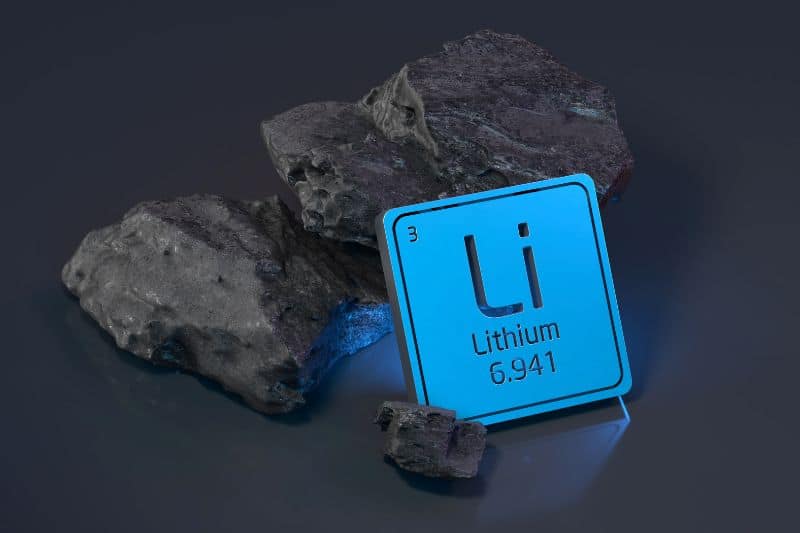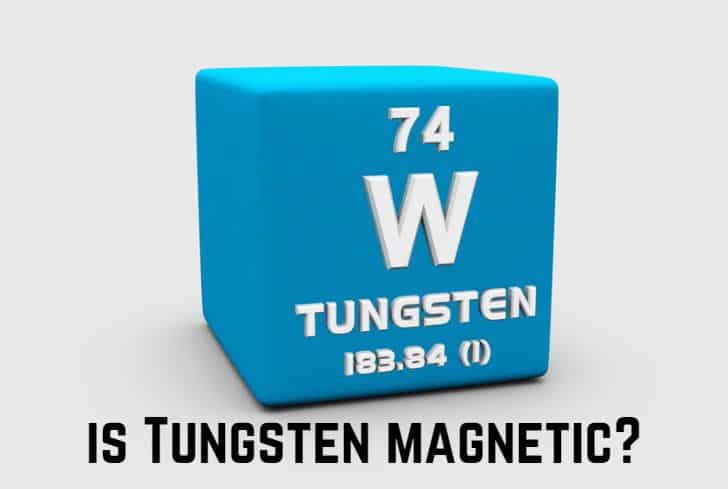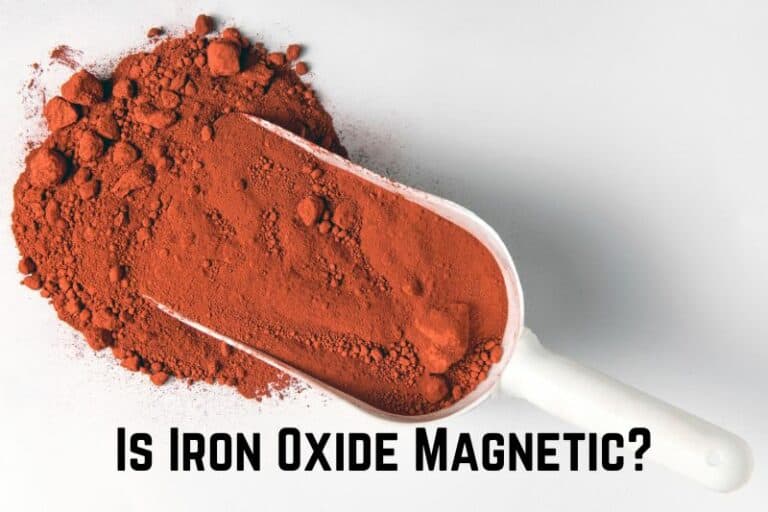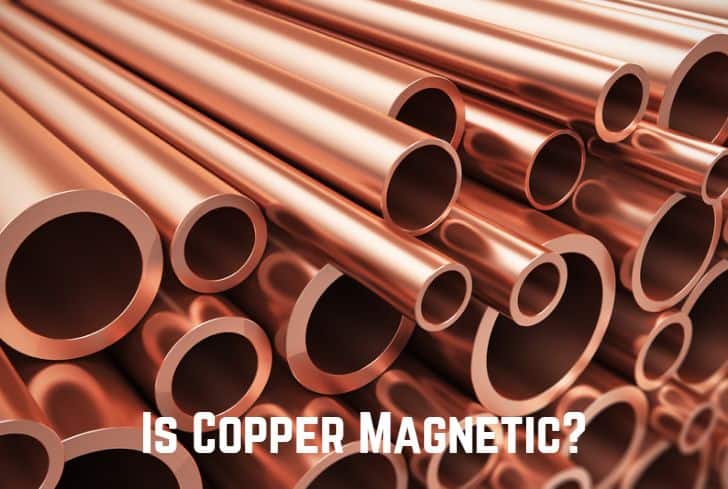Is Lithium Magnetic or Non-magnetic?

The vast majority of metals sink in water—however, lithium floats. But the fact that you can cut it with a knife or pair of scissors is lithium’s most intriguing characteristic. Lithium exhibits properties that are different from that of the other metals. So, it will be interesting to examine its numerous unique properties. Is lithium magnetic? Let’s find out!
The first question we will answer in this article is that one. We’ll also go over lithium’s malleability, flammability, and reactiveness. Read to the end to find out whether lithium is a metal or a non-metal and more about its properties and uses.
Read: Is Neon Magnetic or Non-magnetic? (Answered)
Does Lithium Attract Magnets?
Lithium attracts magnets. It is slightly more susceptible to magnetic fields than usual. Lithium has a weak attraction for an external magnetic field. However, lithium loses its magnetic properties when you remove the external field. Thermal motion causes the electron spins of lithium to become random, making lithium lose its magnetic properties. Hence, a magnet’s force directly relates to the lithium’s magnetism.
The degree to which a material becomes magnetized in response to an applied magnetic field is known as magnetic susceptibility. The interaction of the electrons and nuclei with an external field causes a material to become magnetic.

Is Lithium Paramagnetic or Diamagnetic?
Lithium is paramagnetic. One of its unpaired electrons realigns when you apply an external magnetic field. Magnetic fields significantly impact a material like lithium because it has an outer subshell that is not filled with electrons. Lithium’s electron configuration reveals that its subshell has only one electron. The unpaired electron can rapidly attract a magnetic field.
The valence electron in lithium functions like a small magnet. The unpaired electron has a magnetic dipole moment due to its spin. The magnetic field of the applied external magnetic field lines up with the electron’s spin. Lithium is attracted to the external magnetic field, causing its unpaired electrons to align in the same direction. However, when you remove the external magnetic field, lithium electrons return to their random, non-aligned spins.
The electrons in an atom’s last orbit are known as valence electrons. They determine an element’s properties and contribute to bond formation. The atomic number of an element is the same as its number of electrons. Lithium has three electrons because of its atomic number of three.
The second shell, the outer shell, is shown in the diagram below, having just one unpaired electron.
Alt: A diagram showing a lithium atom (Bohr model).
Is Lithium Malleable?
Lithium is malleable. That means it can change shape without breaking when compressed. Because lithium is weaker than other metals, you can cut it with a dull knife or scissors. Contributing also to lithium’s malleability is its lightweight. Lithium has a weak metallic bond because it only has one valence atom. The crystal lattice of lithium has low binding energy.
How much pressure a material can endure is a good indicator of how malleable it is. When pressure is applied to lithium, its atoms are forced to roll over one another in various formations without breaking their metallic bond.
Lithium is a metal that shouldn’t be used in making coins or construction.
Is Lithium Reactive?
Lithium is highly reactive. It does not naturally occur in its pure form because of its reactivity. Lithium combines with igneous rocks in mines, brine pools, and underground water springs to form lithium chloride salts. Only one electron exists in the outer shell of lithium, which readily moves to form compounds and bonds.
Water and lithium react to produce hydrogen gas and lithium hydroxide. Lithium reacts when it floats on water by taking its oxygen and generating hydrogen bubbles. On the water’s surface, it fizzles before disappearing. The fizzing indicates the lithium reaction that releases the hydrogen gas. The gas produces a fiery orange flame.
On his YouTube channel, Philip Evans demonstrates the reaction of Lithium and Water
Lithium has a high activation energy, making removing its solitary valence electron more energy-intensive. Keep in mind that the valence electron is quite near the nucleus. Higher activation energy atoms respond more slowly. But lithium produces a great deal of heat—the reason why there is a flame and fizzing.
When lithium comes into contact with air, it reacts to form lithium hydroxide. It also reacts with nitrogen to form lithium nitride, which gives the lithium’s surface a drab gray color. Another reaction between lithium and carbon dioxide results in lithium carbonate. Lithium is kept in mineral oil or argon due to its quick reaction with air.
Is Lithium Flammable?
Lithium is flammable. It burns with a dazzling white color and a red blaze. The possibility of lithium’s flammability increases because it has a low melting point. When compared to other metals, its boiling point is likewise relatively low. Lithium is so explosive that flammable hydrogen gas forms when it interacts with water.
Manufacturing lithium batteries is one of the uses for lithium. Due to their extreme flammability, lithium metals present an explosive risk. The presence of the following substances is likely to cause lithium batteries to ignite.
- Heat sources,
- Flammable substances,
- Water and liquid substances,
- Battery failures,
- Improper storage of batteries,
- Attempting to recharge a non-rechargeable battery.
As a result, use copper powder-containing Class D fire extinguishers to put out a lithium fire. Please refrain from using water or other types of fire extinguishers. With water or any other flammable materials, any lithium fire, whether organic or inorganic, responds fiercely.
Is Lithium a Metal or Nonmetal?
Lithium is an alkali metal. All alkali metals except nitrogen are in group one of the periodic table. Since they all only have one electron in their outer shell, the metallic link between them is weak. Due to the weak metallic bonding, lithium has a lower melting point. The least dense of the alkaline metals, it is regarded as a soft metal.
But if lithium can be cut with a knife, why is it still regarded as a metal? Lithium shares a few elements with metals:
- Like most metals, it is a good conductor of heat and electricity.
- Due to its ductility, lithium can stretch into a wire.
- It is solid at room temperature.
- You can hammer it into thin sheets because it is malleable.
- Lithium has a silvery gray tint and a shiny, metallic sheen.
The other alkali metals are cesium, potassium, sodium, francium, and rubidium. Some qualities they share with lithium are low density, high reactivity, and low boiling and melting points.
Minerals including petalite, lepidolite, and spodumene, contain lithium. Crushing and grinding are crucial steps in the mining process to separate the minerals containing lithium from the other minerals. The most prevalent form of lithium in most sectors is lithium carbonate, which forms after further processing of lithium-containing compounds.
Properties of Lithium
Chemically, lithium is denoted by the letter Li. It has seven isotopes, and their mass numbers range from 5 to 11. The chemical and physical properties of lithium are displayed in the table below.
| Physical | Chemical |
| -Ductile and malleable. | -Has a melting point of 356.9°F (180.5°C). |
| -It has a silvery color, and you can cut it readily with a knife. | -Readily oxidizes in air and water. |
| -A good conductor of heat and electricity. | -A boiling point of 2426°F (1330°C). |
| – Its density is 0.534 (g x cm3). | -The only alkali metal in solid or solution form that does not produce the anion Li. |
| -Lithium has a low density, allowing it to float on water. | -The only metal that forms nitrides when reacting with nitrogen. |
Read: Is Basalt Magnetic? (Properties & Uses)
Uses of Lithium
Johan August Arfvedson discovered lithium in 1817. Lithium’s name is a translation of the Greek word “lithos,” which means stone. Since lithium does not occur freely, it is often produced by electrolyzing lithium and potassium chloride.
Below, we list some of the many uses of lithium:
- The manufacture of rechargeable batteries used in laptops, solar panels, vehicles, digital cameras, and motorcycles. Lithium also manufactures non-rechargeable batteries for pacemakers, watches, and toys.
- Metals like magnesium and aluminum are alloyed with lithium to make them stronger and lighter. Due to these characteristics, the two metals are widely used in producing engineering, aerospace, high-speed train, and bicycle parts.
- Systems for industrial drying and air conditioning use lithium bromide and lithium chloride.
- It is used in nuclear power. Helium and tritium form when slow neutrons strike Li-6, making it ideal for producing hydrogen bombs. This tritium production method also yields a hydrogen isotope for biological research,
- Special glass and ceramic are made with the help of lithium oxide. By strengthening glass and ceramic, lithium carbonate and lithium silicate increase the two material’s durability.
- It is used to treat many different illnesses and disorders, including mania.
Conclusion
Lithium, having one electron in its outer shell, attracts a magnet. It is paramagnetic. Paramagnetic materials weakly attract magnets and quickly lose their magnetic properties once you remove the magnet.
Because of its reactive nature, lithium tends to be flammable too. The presence of water or air is enough to cause lithium to explode. However, you can store lithium in mineral oil or argon to contain its reactive nature.






